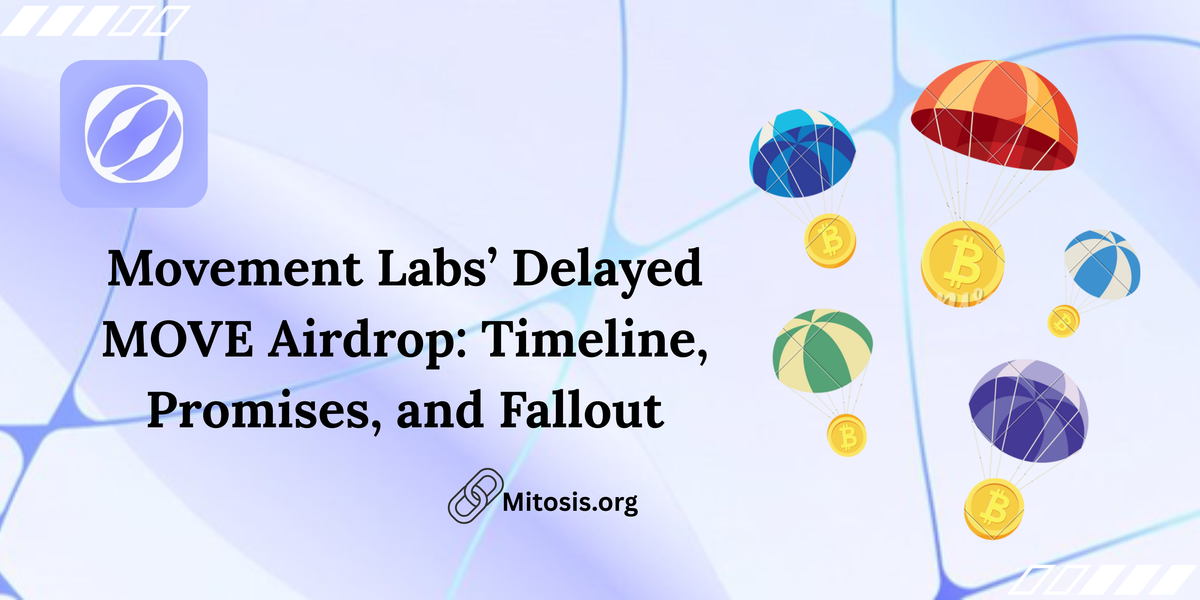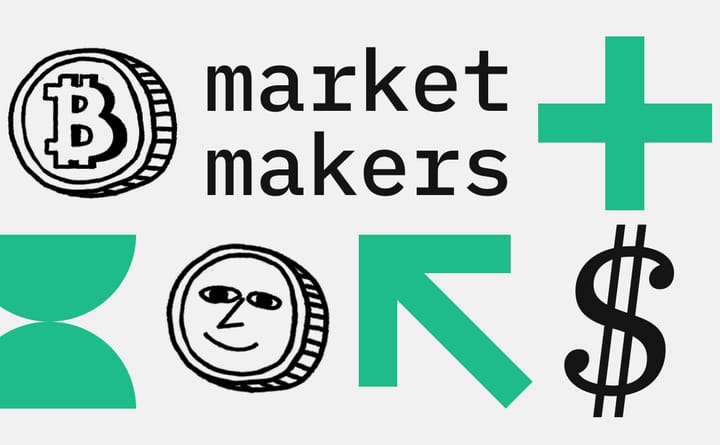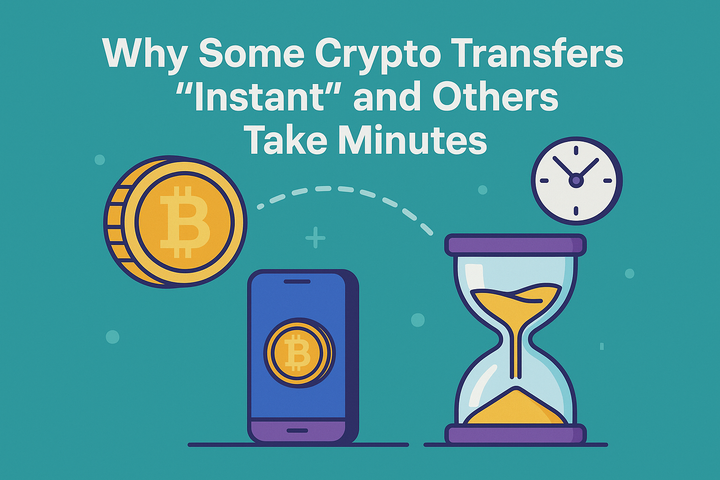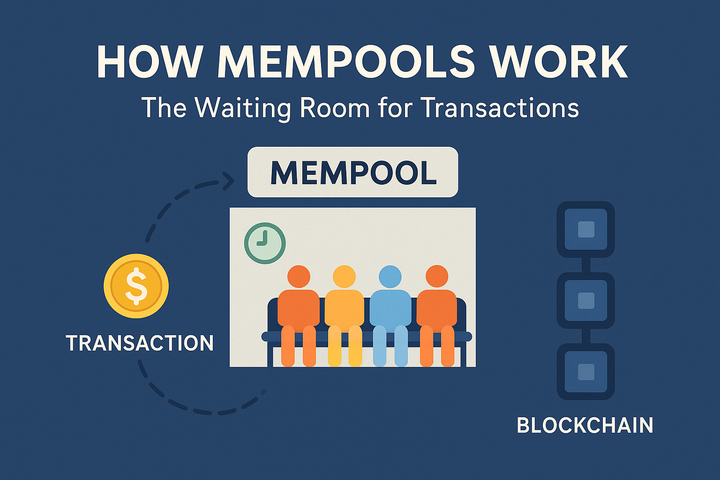Movement Labs’ Delayed MOVE Airdrop: Timeline, Promises, and Fallout

Movement Labs – co-founded by Rushi Manche – launched its MoveVM-powered blockchain mainnet beta in December 2024, combining the Move language (from Sui/Aptos) with Ethereum’s security. As part of the launch (“MoveDrop”), up to 10% of the MOVE token supply was distributed on Dec 9, 2024. See blockworks.co. In early 2025, the team signaled further token distributions: on March 23, Manche publicly assured users that a second “MoveDrop” was coming in April and insisted there would be “no delays”aicoin.com. The roadmap cited needed tasks – bridging Cornucopia TVL, ensuring the Parthenon bridge readiness, preventing Sybil claims, and adding incentives – to smooth the process. In effect, Movement promised an orderly airdrop, with no added hurdles and a firm April timeline. See https://www.aicoin.com/en/news-flash/2278696#:~:text=According%20to%20BlockBeats%2C%20on%20March,smoothly%20and%20without%20any%20delays
However, reality diverged. By mid-April 2025, Movement’s operations were in turmoil. Co-founder Rushi Manche reportedly took a leave amid scrutiny of unusual token trading (a Binance-flagged market-maker dump in March). See ainvest.com. On April 30, Movement announced on social media that “MoveDrop must be postponed” – blaming “ongoing investigation into abnormal market makers, governance changes, and [a] MoveDrop witch attack” (i.e. a large Sybil/fraud incident). In other words, the promised April distribution was delayed indefinitely pending investigations. Movement said it would “implement governance changes” to prevent a recurrence and even recycle “Sybil tokens” into community rewards.
This sudden postponement sharply contrasted with earlier assurances. The chain’s foundation had initially been prepared by returning 740 million MOVE tokens to the Foundation wallet for MoveDrop. Now, instead of launching in April as promised. See aicoin.com, MoveDrop was still months away (and ultimately remains unfunded as of May 2025). In short, what was pledged as a smooth, timely airdrop turned into a belated postponement, with the team citing investigations and token recycling as reasons.
Community Reaction and Trust Fallout
Unsurprisingly, the community reacted negatively to the delay. Social media sentiment turned to frustration and skepticism. According to press reports, the Movement’s announcement of a delayed airdrop “triggered frustration among the community”. Long-time supporters took to Twitter (X) to vent and seek answers. As one vocal user put it: “These delays are real setbacks… but surely they don’t define the project’s overall vision.” That comment, while urging perseverance, acknowledges the damage. On balance, the mood was one of betrayal and impatience. See ainvest.com
The trust impact was severe. After years of hype and a $9 billion-plus fully-diluted valuation at launch, MOVE’s credibility slid. Media reports emphasize the “fragility of trust” in this episode. MOVE’s price fell sharply: Coinbase even delisted the token on May 1, citing fraud allegations and the delayed airdrop. The token plunged over 16% immediately. Observers noted that holders were “rapidly liquidating” out of concern. Some investors openly compared the fiasco to past DeFi crashes (e.g. the OM token debacle), warning that Movement’s foundation now “appears shaky due to compounded issues.” See ainvest.comainvest.com.
In essence, the delay has underscored weak launch discipline. A token-drop promised without hiccups became a cautionary tale. Community members point to the mismatch between what was promised (an on-time, incentive-rich airdrop) and what was delivered (a postponed event amid controversy). The episode exposed gaps in governance and execution. With Movement’s team scrambling to investigate “market maker anomalies” and reassess procedures, observers concluded that the project lacked the orderly launch processes investors expect See bitget.comainvest.com.
What the Delay Signals About Launch Discipline
This saga highlights several discipline issues. First, planning: despite lofty promises, the Movement evidently lacked contingency plans or timely execution. The sudden need for investigations suggests they either overlooked red flags or failed to safeguard their token sale mechanics. Second, communication: early assurances of “no delays” backfired badly when problems arose. The team’s messaging shifted abruptly from confidence to excuses, eroding credibility. Third, governance and transparency: the fact that an obscure market-making deal (granting 66 million tokens to a shadowy middleman) was reportedly only flagged internally as “the worst agreement” shows poor oversight. Community trust suffered as a result.
In crypto launches, discipline and trust go hand-in-hand. When a project misses promised deadlines or seems reactive to crises, users often assume the worst – insider mishandling or worse. Movement’s case is instructive: whatever the underlying cause (be it external market attacks or internal mismanagement), the way the delays were handled left many holders uneasy. As one analyst noted, the speed of liquidations and social media backlash reveals a “broader lack of confidence in [Movement’s] network.” See ainvest.com. In short, the MOVE drop delays have become a visible symptom of lax launch discipline, reinforcing the idea that in crypto, execution and follow-through are as important as technology.
Mitosis: Architecture for Reliable Launches
By contrast, Mitosis – a next-generation modular blockchain – builds its entire model around robust infrastructure, which suggests it is far better positioned to avoid the above pitfalls. Mitosis is an EVM-compatible Cosmos-based chain designed from the ground up for composable cross-chain liquidity. Crucially, Hyperlane interoperability is built in as a core layer. This means Mitosis can connect to any chain (Ethereum, rollups, Cosmos zones, etc.) without needing permission or third-party bridges. In practice, any project can deploy Hyperlane on a new chain and immediately integrate with Mitosis, “expanding to any chain without needing the Hyperlane core team. This permissionless interop eliminates the bottleneck of waiting for bridges or market-maker deals – a friction that Movement encountered in practice. See https://docs.mitosis.org/docs/category/expedition
Another key element is Mitosis’s Matrix Vaults. As Mitosis’s docs explain, a Matrix Vault is a “vault-based liquidity module” that structures how capital participates across chainsuniversity.mitosis.org. In effect, each liquidity campaign is formalized on-chain. Matrix Vaults connect to the broader cross-chain “Matrix Engine,” offering governance-aware liquidity. In practical terms, this means that instead of ad-hoc token dumps or off-ledger deals, liquidity allocations are controlled by smart vaults. Users deposit assets into vault contracts and receive tokenized shares (miAssets), which automatically route liquidity and rewards according to on-chain logic. This composable design allows for programmable control of capital and cross-chain movement, exactly the opposite of opaque market-maker agreements. Because every Matrix Vault’s rules and rewards are visible on-chain, the community can audit and understand how liquidity will be distributed, greatly reducing the chance of surprises or hidden dumps. See https://university.mitosis.org/matrix-vault-a-new-paradigm-for-cross-chain-liquidity-in-mitosis-mitosis-introduces-matrix-vault-a-composable-and-governance-aware-liquidity-infrastructure-this-new-system-complements-t/#:~:text=Matrix%20Vault%20is%20a%20vault,a%20seamless%2C%20modular%20liquidity%20infrastructure
Mitosis also employs Ecosystem-Owned Liquidity (EOL) governance to keep the community in charge. Under EOL, liquidity from all Matrix Vaults (on Ethereum, Arbitrum, Optimism, etc.) is pooled and managed by holders themselves. When traders deposit into a vault, they receive a 1:1 miAsset that accrues yield and – importantly – confers voting power over future allocations. As described in the official docs, EOL “empowers liquidity providers to decide allocation terms through public votes and forum discussions, shifting traditional backroom negotiations into a transparent, community-driven process”. In other words, Mitosis turns liquidity management into a democratic, on-chain exercise. This contrasts starkly with the Movement’s experience, where opaque off-chain contracts and decisions about token pools led to mistrust. In Mitosis, any change to token distribution or liquidity routes must clear governance votes, aligning the project’s economics with the community’s interests. See university.mitosis.org.
Finally, Hyperlane-based settlement ensures Mitosis can deliver across chains with fast finality and predictable scheduling. Since Hyperlane messaging is permissionless and modular, Mitosis treats cross-chain transfers as just another smart contract operation. See medium.com. This built-in interop layer means there is no reliance on an external market-maker or escrow service to move funds between chains – instead, assets are locked in vaults and the state is synced via Hyperlane. The result is fast, deterministic settlement, and the ability to launch on new chains without coordination headaches.
Together, these design choices promote launch discipline. Mitosis’s documentation and blog emphasize its systematic approach: modular architecture, documented vault systems, and community governance. For example, Mitosis University notes that matrix vaults provide “structured liquidity participation across chains”university.mitosis.org, and an official post assures readers that programmable liquidity flows will be transparent and community-steered. The Hyperlane Medium post even positions Mitosis as a solution to the fragmented launches of other chains: it’s built to “reunify the liquidity and UX” of new blockchains.
In practice, this means Mitosis is unlikely to encounter the same airdrop drama. Its token economics are handled through vault contracts and yields rather than one-off drops, and its community-driven governance ensures against sudden unilateral moves. Any scheduled distribution of MITO or rewards would be baked into on-chain rules (e.g, vesting curves or vote conditions), not dependent on external deals or the whims of a few insiders. If issues arise, the community has formal channels (EOL votes, forums) to respond, rather than piecemeal social-media announcements.
Conclusion
The MOVE token’s delayed airdrop exposed the risks of undisciplined launches: broken promises, market chaos, and eroded trust. Mitosis, by contrast, has prioritized transparent infrastructure. Its Matrix Vaults, EOL governance, and Hyperlane-native design create a self-contained, modular liquidity system. These features align incentives, distribute control, and automate settlement – all of which should yield smoother rollouts and more reliable delivery of promises. In short, Mitosis’s architecture is deliberately built to avoid the kind of backroom token deals and miscommunication that plagued Movement Labs. By codifying liquidity flows and community oversight in its core design, Mitosis aims to build confidence through consistency, rather than having to rebuild trust after a stumble.



Comments ()